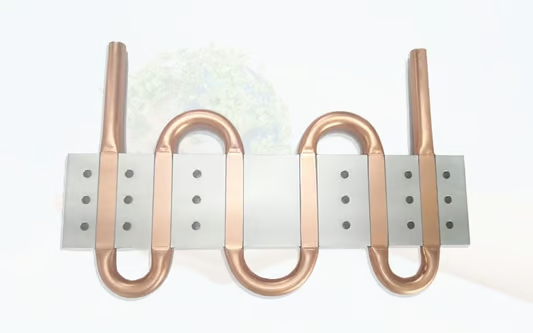What is the difference between liquid cooling and vapor chamber cooling?
Introduction:
In the world of computer hardware, cooling is an essential aspect to ensure optimal performance and prevent overheating. There are various cooling methods available, but two popular options are liquid cooling and vapor chamber cooling. While both aim to dissipate heat effectively, they differ in their mechanisms and applications. In this article, we will explore the key differences between liquid cooling and vapor chamber cooling.
1. Mechanism of Liquid Cooling
Liquid cooling, also known as water cooling, utilizes a closed-loop system that circulates liquid coolant to dissipate heat. The liquid coolant absorbs heat from the components and transfers it to a radiator, where it is then cooled by fans or other means before being recirculated.
2. Mechanism of Vapor Chamber Cooling
Vapor chamber cooling, on the other hand, utilizes a sealed chamber containing a small amount of liquid coolant. When the components generate heat, the liquid coolant evaporates and spreads within the chamber, carrying the heat away. The vapor then condenses on the walls of the chamber, releasing the heat to the surrounding air.
3. Efficiency and Heat Dissipation
When it comes to efficiency and heat dissipation, vapor chamber cooling has the upper hand. The large surface area of the chamber allows for better heat spreading, resulting in more effective cooling. Additionally, vapor chamber cooling can handle higher heat loads compared to liquid cooling, making it suitable for high-performance applications.
4. Compatibility and Size Considerations
Liquid cooling systems require the installation of dedicated water blocks or cooling plates on individual components, such as the CPU or graphics card. This can add bulk to the system and may not be compatible with all hardware configurations. Vapor chamber cooling, on the other hand, typically comes in the form of a single, flat chamber that can be easily integrated into various devices.
5. Maintenance and Leakage Risks
One aspect where liquid cooling falls short is maintenance. The need to regularly check coolant levels, replace fluids, and prevent leaks can be cumbersome for some users. On the other hand, vapor chamber cooling does not require any maintenance as the coolant remains within the sealed chamber, eliminating the risk of leaks.
6. Noise and Fan Requirements
Liquid cooling systems often involve the use of fans to cool the radiator, which can contribute to noise levels. Additionally, if the fans malfunction or become clogged with dust, it can impact cooling performance. Vapor chamber cooling, being a passive cooling solution, does not rely on fans and operates silently, making it a desirable choice for those seeking a quieter computing experience.
7. Cost Considerations
When it comes to cost, liquid cooling systems tend to be more expensive than vapor chamber cooling. The need for additional components, such as water blocks, pumps, and radiators, can drive up the overall cost. Vapor chamber cooling, while not necessarily cheaper, offers a more straightforward solution without the need for additional components.
8. Application and Usage Scenarios
Liquid cooling is commonly used in high-end gaming PCs, overclocked systems, and server environments where thermal management is crucial. It provides excellent cooling performance and allows for aggressive overclocking. Vapor chamber cooling, on the other hand, finds its applications in thin and compact devices like laptops and smartphones, where space constraints and weight considerations are important.
9. Installation and Expertise Requirements
Installing a liquid cooling system can be more complex compared to vapor chamber cooling, requiring knowledge of plumbing, component compatibility, and potential risks. Vapor chamber cooling, on the other hand, is relatively simpler to install as it usually involves attaching the chamber directly to the heat-generating component.
10. Conclusion
In summary, both liquid cooling and vapor chamber cooling offer effective cooling solutions, but they differ in terms of their mechanisms, efficiency, compatibility, maintenance requirements, noise levels, and costs. Liquid cooling is suitable for high-performance desktop systems, while vapor chamber cooling is more popular in portable devices with limited space. Understanding the differences between these cooling methods allows users to make informed decisions based on their specific needs and preferences.

